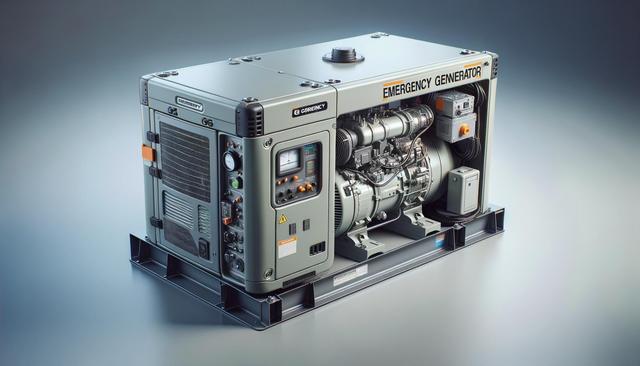Staying Powered During Outages: A Practical Look at Emergency Generators
An emergency generator can be a crucial asset when the power goes out unexpectedly.

Why Emergency Generators Matter
Power outages can happen for a variety of reasons—storms, grid failures, maintenance issues, or natural disasters. In these situations, an emergency generator provides a reliable source of backup power, allowing homes and businesses to continue functioning without disruption. The significance of having an emergency generator becomes even more apparent when considering critical needs such as heating, medical equipment, refrigeration, and communication systems. Without power, these essentials can be compromised in a matter of hours, making a generator not just a convenience but, in many cases, a necessity.
Generators offer peace of mind and a buffer against the unexpected. They are particularly important in regions prone to extreme weather or areas where the electrical grid is less reliable. For businesses, an outage can mean lost revenue and compromised data. For households, it could mean discomfort, safety issues, and spoilage of food or medicine. Emergency generators help mitigate these risks by providing power continuity when it’s needed most.
Types of Emergency Generators
Emergency generators come in various sizes and configurations to suit different needs. The two main categories are portable and standby generators, each serving distinct purposes. Understanding the differences between them can help in making an informed decision.
Portable generators are:
- Typically powered by gasoline or diesel
- Easy to move and store
- Ideal for short-term or occasional use
Standby generators, on the other hand, are:
- Permanently installed outside a building
- Connected directly to the electrical system
- Powered by natural gas or propane
- Capable of turning on automatically during an outage
Choosing between these options depends on factors such as budget, desired power output, frequency of use, and the criticality of the devices that need to be powered during an outage.
Key Features to Consider
When selecting an emergency generator, certain features can enhance its usability and reliability. These include fuel efficiency, noise level, start-up mechanism, and maintenance requirements. A generator with an automatic transfer switch (ATS), for instance, can detect a power outage and start the generator without any manual intervention. This is particularly useful for individuals who are not always home or businesses that require uninterrupted operations.
Important features to evaluate include:
- Power capacity (measured in watts or kilowatts)
- Fuel type and availability
- Run time on a full tank
- Ease of maintenance and service intervals
It’s also advisable to assess the total power needs of your home or facility to ensure the generator can handle the load. Overloading a generator can reduce efficiency and cause long-term damage, so proper sizing is essential.
Installation and Safety Considerations
Installing an emergency generator, especially a standby model, often requires professional assistance. Correct installation ensures not only operational efficiency but also safety. Improper connections or inadequate ventilation can lead to carbon monoxide poisoning or fire hazards. For portable generators, it’s critical to operate them in well-ventilated areas and never indoors or in enclosed spaces.
Key safety measures include:
- Using carbon monoxide detectors near generator locations
- Following manufacturer guidelines for placement and operation
- Regular inspection for fuel leaks or worn-out components
- Storing fuel safely away from living spaces
Local regulations may also dictate how and where a generator can be installed, so checking with local authorities or a licensed contractor is a recommended step in the process.
Maintenance and Long-Term Use
Like any mechanical system, emergency generators require regular maintenance to remain dependable. This includes checking oil levels, replacing filters, and running the generator periodically to ensure it starts when needed. Some models come with self-diagnostic systems that alert users to service needs, while others may require a more hands-on approach.
A proactive maintenance routine might include:
- Running the generator under load at least once a month
- Changing oil and filters as recommended by the manufacturer
- Inspecting the battery and fuel system regularly
- Keeping a maintenance log for service history
Proper care not only extends the lifespan of the generator but also improves performance during emergencies. Investing in a service contract or scheduling annual professional inspections can provide added assurance that the unit will function reliably when needed.
Conclusion: Preparing for the Unexpected
Emergency generators serve as a valuable safeguard against power interruptions, offering both practical benefits and peace of mind. Whether for a household looking to maintain essential functions during a storm or a business aiming to protect its operations, having the right generator in place can make a significant difference. By understanding the types, features, installation requirements, and maintenance needs, users can make informed choices that align with their specific circumstances. In a world where power outages can occur with little warning, being prepared with a reliable emergency generator is a wise and responsible step.